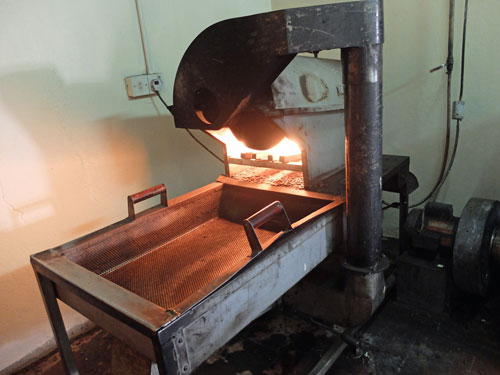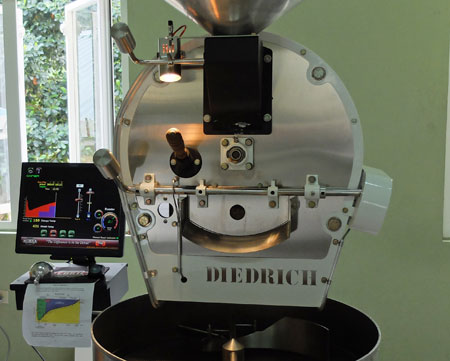How low-tech and high-touch makes Jamaica Blue Mountain Coffee so good.
I have written in the past about how high-tech coffee making machines add nothing to the quality of your coffee in the cup.
All you need is good coffee, a coffee grinder, a kettle and a $10 filter cone.
That setup will make as good a cup of coffee as those fancy brewers that cost hundreds or even thousands of dollars.
Well, that low-tech and high-touch approach to gourmet coffee also has a role to play when it comes to growing, processing and roasting the beans.
This is something I learned during my trip to Jamaica, where the steep mountain terrain makes it impossible to manage the farms with machinery, or in any way automate the coffee growing and picking process.
What I saw there was very little automation in the fields, and a lot of people who had decades of experience hands-on with the coffee, and who approached everything they did – from the field to the roasted bean - with the eyes and hands of true craftsmen.
As I showed in a previous article in this series, that hands-on approach also extends to sorting the green coffee beans for quality.
To further make my point, let’s look at two different coffee roasting machines.
A state of the art roaster at a coffee processing plant.
This photo shows a brand new roaster, complete with software and a flat-screen display. It has all the software and bells and whistles you could ask for.
In fact, with an hour’s instruction, even I could probably roast decent coffee with that roaster. I wouldn’t know what I was doing…but the software would make up for my lack of knowledge. Maybe.
Now scroll back up to the top of the page and take a look at what appears to be an antiquated roaster, perhaps on its last legs.
In fact, it isn’t on its last legs. It’s just a very basic setup, connected to a propane cylinder to roast the beans. No software. No flat-screen. No buttons.
But here is the surprise. This very basic looking roaster is used by a man who is arguably the best roaster on the island. In fact, he often works as a consultant to the companies that have the fancy, high-tech machinery.
How does he roast such great coffee with this machine? He succeeds because he knows what he is doing. He has decades of experience roasting the local coffees.
He knows the farmers and the differences in their land.
He knows where each coffee farm is located, including its elevation.
He knows what the weather was like during the growing season.
And when he holds some green beans in his hand, he truly knows what he’s looking at.
In other words, he’s a craftsman. He uses his eyes and his hands…and then needs only very simple machinery with which to roast some perfect beans.
This combination of experience and simplicity reminds me of one of my favorite quotes from the author William Gibson:
"The handles of a craftsman's tools bespeak an absolute simplicity, the plainest forms affording the greatest range of possibilities for the user's hand. That which is overdesigned, too highly specific, anticipates outcome; the anticipation of outcome guarantees, if not failure, the absence of grace."
Whether you are growing coffee, processing coffee, roasting coffee or brewing coffee…the quality of the outcome has very little to do with technology.
It has a lot more to do with experience and a deep love of your craft – even when it comes to brewing your coffee at home.
Other articles in this series:
My visit to Jamaica’s Blue Mountain Coffee region.
Why Jamaica’s Blue Mountain Coffee is so good, and why it costs more.
Jamaica Blue Mountain Coffee – from seed to harvest.
Processing coffee in Jamaica’s Blue Mountains.
NOTE: My visit to the Blue Mountain Coffee region wouldn’t have been possible without the generosity and hospitality of David and Marlene of SimpleIndustries.ca (where you can buy Blue Mountain Coffee), and the expert guidance of Basil Jones of Coffee Solutions Ltd. Thank you!
Before you go, sign up to receive the Coffee Detective Newsletter...
Sign up for occasional newsletters about the best coffees and brewing equipment. Plus special updates from the Coffee Detective Coffee Store…






